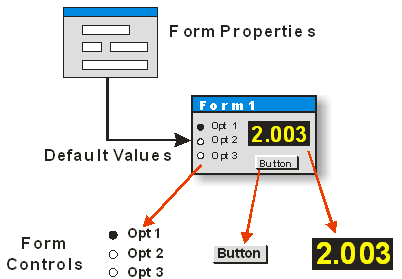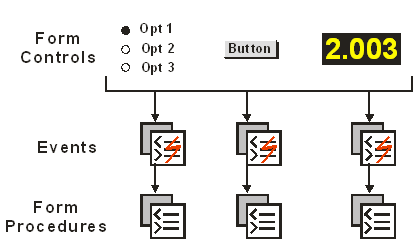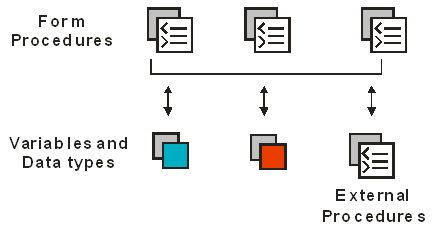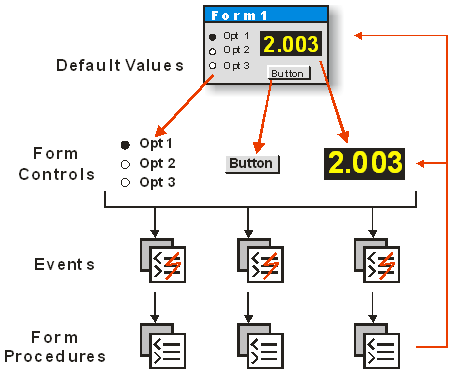
Programming forms in ATEasy follows a model which should be familiar to those who have used an Integrated Development Environment (IDE) such as Visual Basic. The user can design forms that present "virtual panels," visual replicas of real or imaginary instrumentation, and connect them to the events generated by the test session using the ATEasy scripting language. Forms are built up out of controls, such as textboxes, radio buttons, and combo boxes. These forms have properties, including the controls' default properties, which can be set in advance to dictate the controls' default values.

Many form controls can be manipulated by the user, for example, when the user types a value into a text box or clicks a checkbox. When an event involving one of these form controls takes place, the program sends an event notice which an associated procedure, if it has been written, can recognize and act upon. The user can write procedures that are keyed to a particular event out of the group of events the control has associated with it. Each control can have numerous procedures associated with it, each linked to a specific event in the lifetime of the control.

Form procedures do the work that sits behind the form. They can call test procedures and examine results. They can modify variables and call external procedures themselves.

In turn, the values that are generated by a form procedure can modify the properties of the form itself. For example, a floating point measurement returned from a DMM can update the label field of a form to display a new numeric value. If the programmer puts the measurement and update steps inside a loop in the procedure, the form will appear to track the reading in real time.
